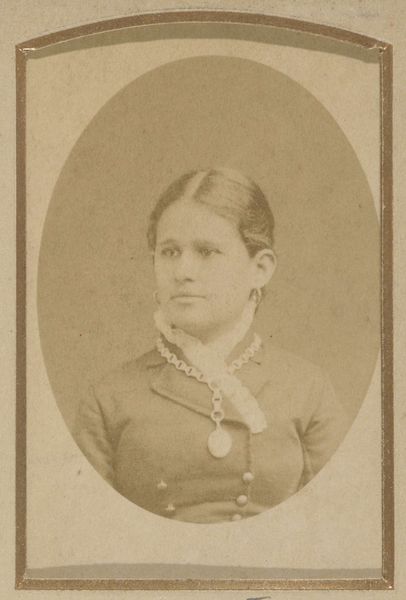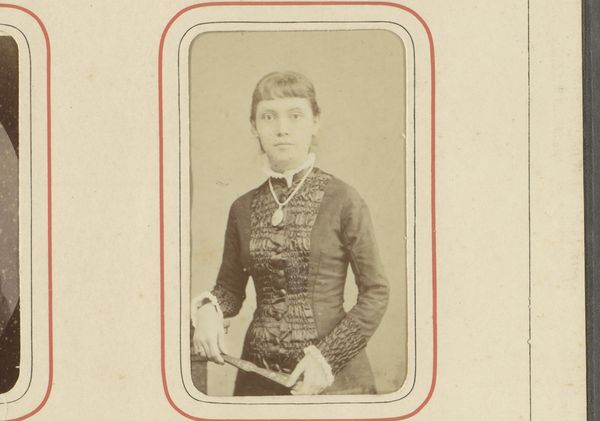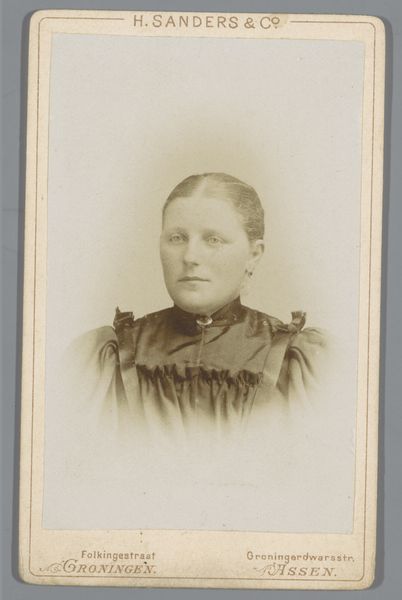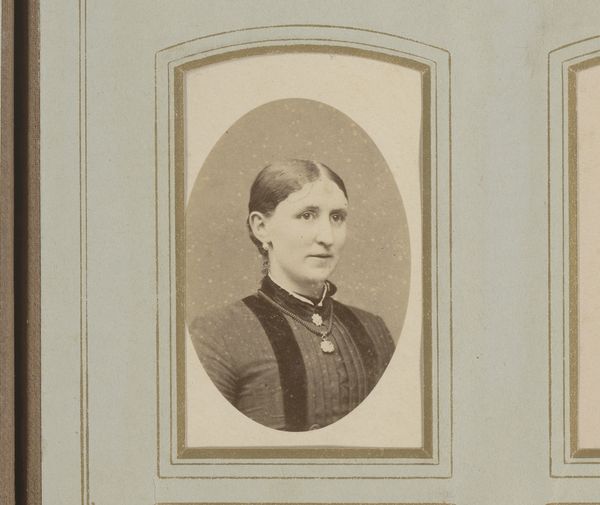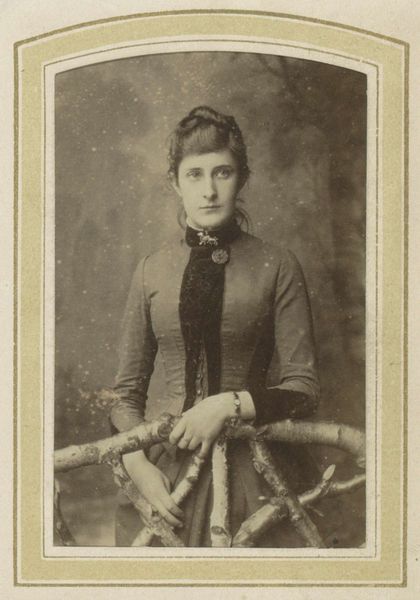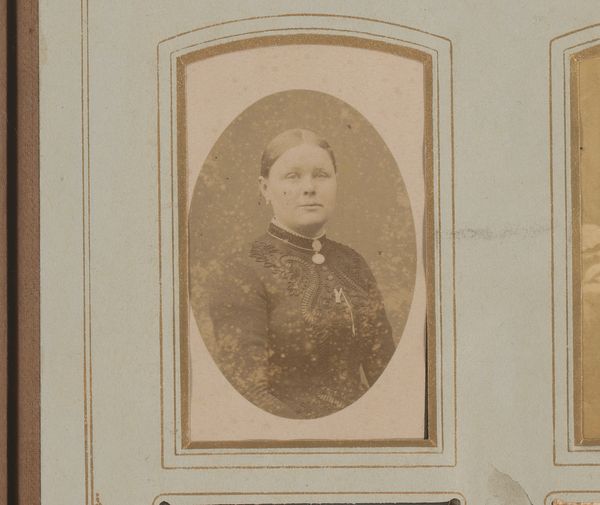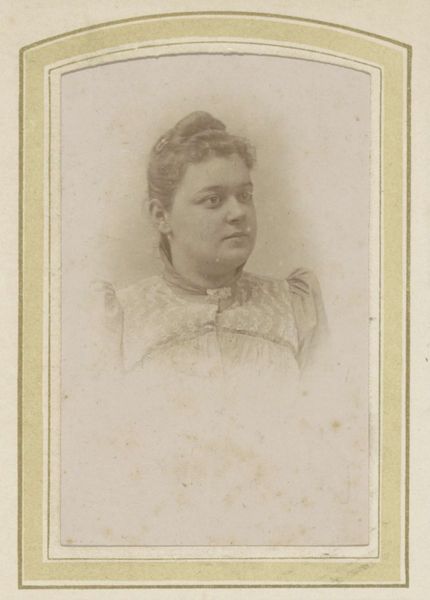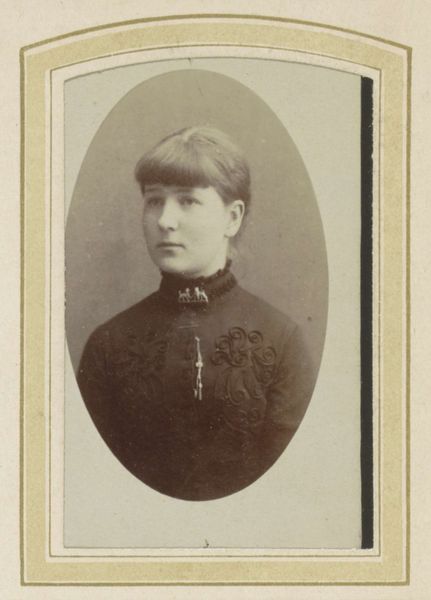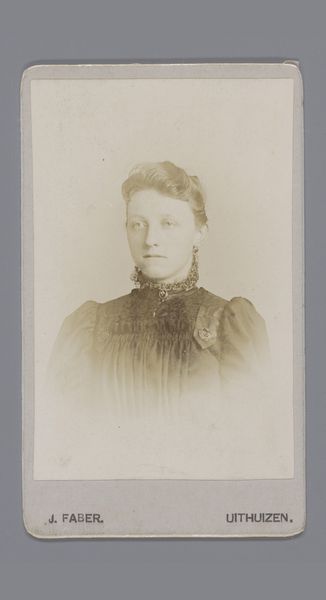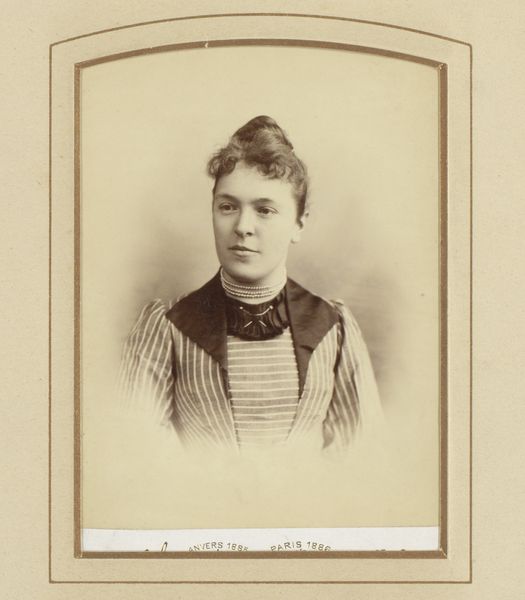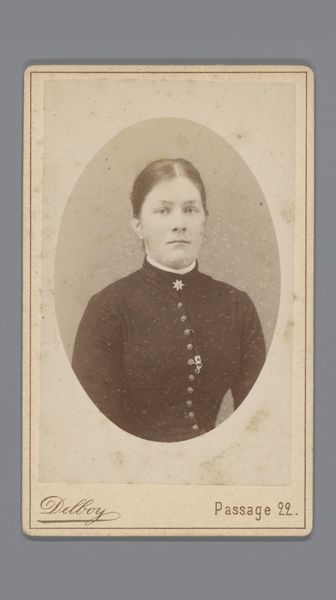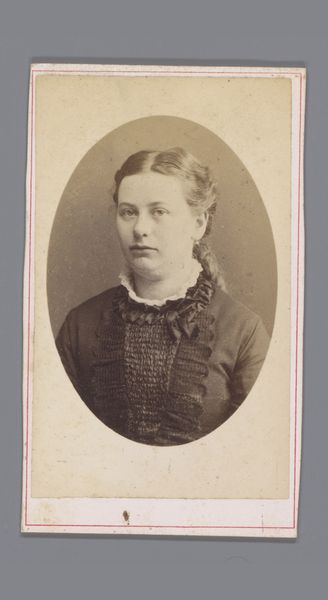
Portret van een vrouw met opgestoken haar, een jas met knopen en een halssieraad c. 1895 - 1920
0:00
0:00
photography, gelatin-silver-print
#
portrait
#
photography
#
historical photography
#
portrait reference
#
old-timey
#
gelatin-silver-print
#
academic-art
#
dress
Dimensions: height 94 mm, width 57 mm, height 104 mm, width 65 mm
Copyright: Rijks Museum: Open Domain
Curator: Looking at this piece, what strikes me first is the feeling of melancholy it evokes, it is titled, "Portret van een vrouw met opgestoken haar, een jas met knopen en een halssieraad" or "Portrait of a Woman with Pinned Up Hair, a Jacket with Buttons and a Necklace." The artist is Johan Herman van der Laag, and this gelatin silver print likely dates from around 1895 to 1920. Editor: Yes, I agree. It's somber, but beautifully so. What immediately draws my attention is the material aspect - the gelatin silver print process. It suggests a moment when photography was becoming more accessible but still retained a certain level of specialized labor. What do you see in this particular work in terms of historical resonance? Curator: For me, there’s an echo of Victorian sensibilities. There's a certain restraint and formality, of course, reflected in the sitter’s attire, which, in turn, mirrors broader societal norms about self-presentation at that time. Her posture—hands resting lightly on what seems to be a makeshift fence—hints at something, too. What did it cost, materially and socially, to make photographs at this time? How would such a piece like this travel around, in a society without modern transportation networks? Editor: Absolutely. We need to consider the expense involved in both the materials – silver, gelatin, glass plates – and the specialized skills needed for developing and printing. Think about the social act of commissioning such a portrait. It signifies a level of affluence. Curator: I wonder what stories her jewelry and clothes would tell. Was that jacket the latest style? Each detail is consciously selected. They wanted to say something about her family's standing. Her necklace may point to mourning rituals; what can that communicate? Editor: The buttons, the fabric's weave—these are small but telling clues. You’ve touched on social signaling, and the mass manufacture of these very things would contribute to changing social classes... The technology creates a possibility for material enfranchisement as well. Curator: Thinking about its continued resonance today, it serves as a fascinating entry point into considering photography's early democratizing potential. Editor: Precisely. Seeing the labor involved in production brings forth reflections about today's technology, where photo-taking has become easy, while simultaneously reminding us of the distance traversed.
Comments
No comments
Be the first to comment and join the conversation on the ultimate creative platform.
